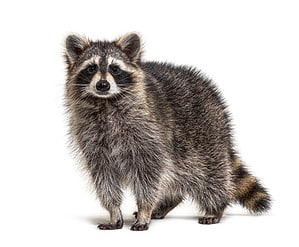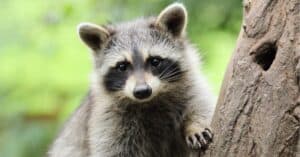When you are out in nature, it can be fun to know what animals you may come across. One way to investigate whose home you are in is by identifying animal tracks. This can also be helpful if you are hunting or trying to figure out who has been raiding your garden! This article will explore a common animal you have probably seen in nature and your backyard. Read on for a complete guide to identifying raccoon tracks – what they look like, where to find them, and how to tell them apart from other species.
| Characteristic | Description |
|---|---|
| Size | Front Paws: 1-2.5 inches Back Paws: 2-4 inches |
| Shape | Front Paws: Human-like Back Paws: Oblong |
| Features | 5 long, slender fingers and a palm |
| Claws | Sometimes visible |
Animal Background
Description
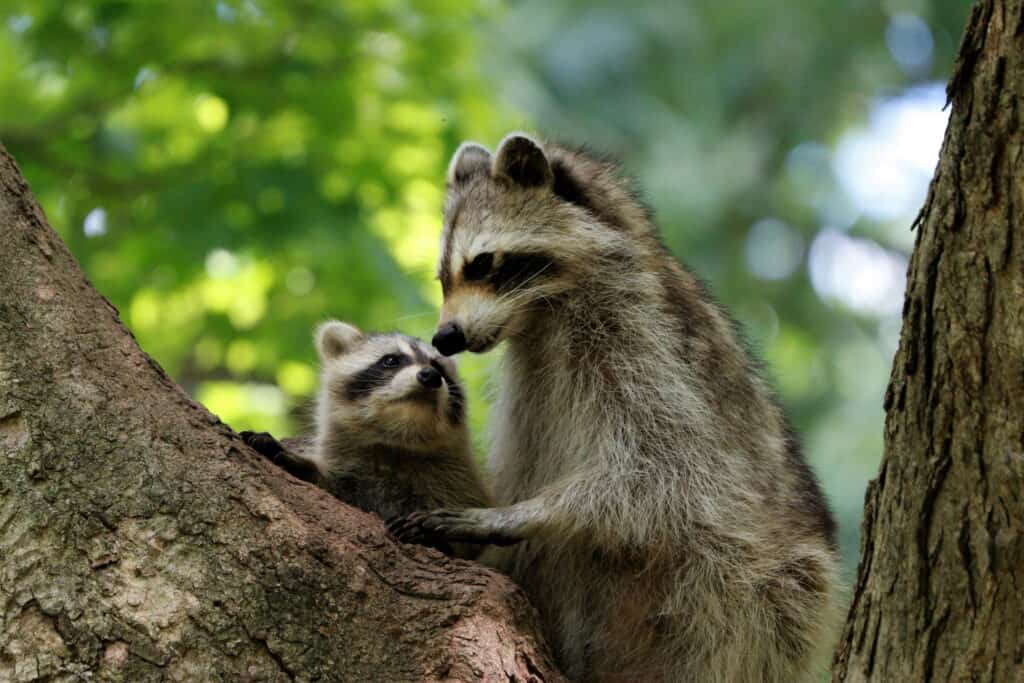
Raccoons have claws that allow them to efficiently climb trees.
©L-N/Shutterstock.com
Living raccoon species include the common raccoon, the crab-eating raccoon, and the critically endangered pygmy raccoon. Common raccoons are typically around 16 to 28 inches long including their tail. At the shoulder, they are between 9 and 12 inches tall. Raccoons are the most variably-sized mammals in the world with their weight fluctuating based on habitat type. They can weigh between 4 and 57 pounds. The largest wild raccoon on record was 63 pounds! Arguably the most recognizable characteristics of raccoons are the black fur around their eyes and the black rings on their tails.
Distribution
Raccoons are native to North America and can be found across Canada and the United States. They have spread to Central and South America, as well as across the Atlantic to Europe and Asia. Their presence in Europe and Asia is largely due to intentional introductions, primarily for hunting purposes. Between 1936 and 1958 for example, 1,240 raccoons were released in the former Soviet Union for hunting. They were also brought to Japan as pets. Now, raccoons cost Japan over $250,000 in agricultural damage every year in Hokkaido alone.
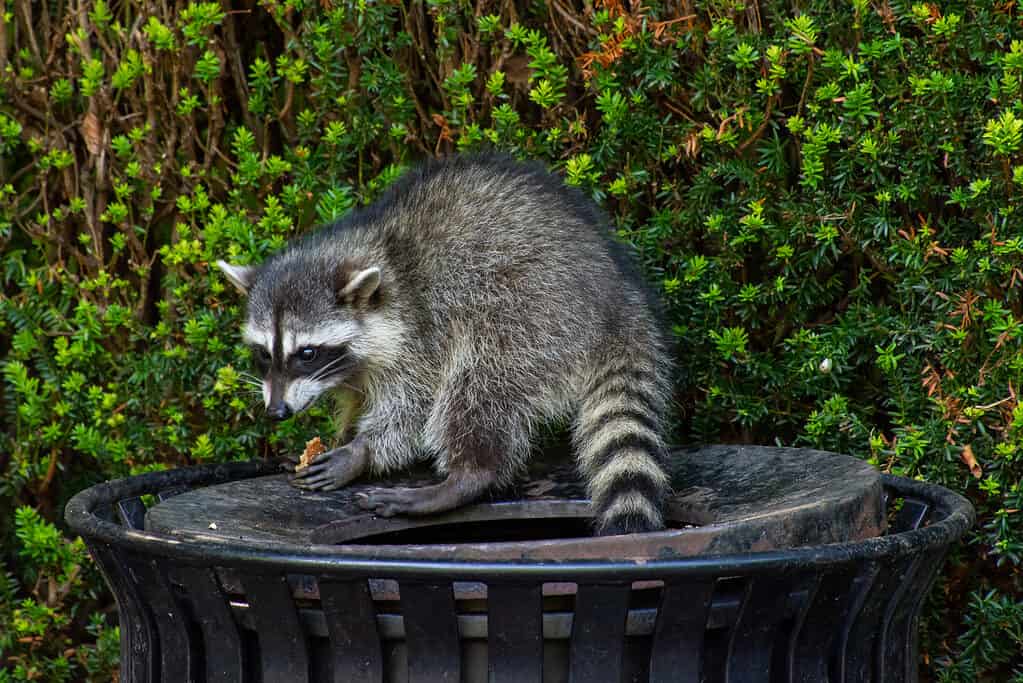
Raccoons often inhabit suburban and urban areas. Their thumbs allow them to open containers and access trash cans.
©kingma photos/Shutterstock.com
Raccoons are extremely adaptable and live in many habitat types. They are also known to exist in rural, suburban, and urban areas with dense human populations. The first sightings of raccoons in human-occupied areas were in 1920 and they have since become common residents. In the wild, they primarily inhabit forests and sparsely wooded regions. They are proficient climbers and ascend trees to evade predators. As a result, they tend to avoid open areas.
Raccoon Tracks
Paw Morphology
Raccoons are “plantigrade” animals. This means that when they walk, their toes and their metatarsals are flat on the ground. Raccoons have thumbs, but they are not opposable. Their thumbs do, however, allow for dexterous movements like opening bottles, garbage cans, and doors. Raccoon paws have 5 adjacent digits, each with a claw. They have relatively long palms, and their fingers are all similar in length, including the thumb. All five digits are at the front of the paw facing forward. Raccoons’ front paws are usually between 1 and 2.5 inches long and resemble a human hand. Their back paws are slightly longer and can measure up to 4 inches long. Interestingly, when a raccoon is climbing, it turns its hind paws backward.

Raccoon paws include 5 long, slender digits.
©Agnieszka Bacal/Shutterstock.com
Raccoon paws are very similar to some other small mammal species. Opossums, for example, also leave tracks with four paws, each with five digits. Raccoon prints are distinct because their digits are longer than an opossum’s and they are all forward facing. Similarly, raccoon tracks with slender fingers are distinct from a skunk’s which appear more like miniature bear prints. Badger prints appear to have a human-like shape, but their fingers are also shorter than a raccoon’s.
Snow

Raccoon tracks are usually side-by-side.
©JT8/Shutterstock.com
Raccoons exist in many places that have significant snowfall. They do not hibernate and will be active even if it has snowed. The animals typically avoid deep snow but tracks at certain depths may be present and indiscernible. In shallow and compact snow, however, raccoon tracks will often be clearly visible. They will have a distinct pattern side-by-side, unlike many coexisting species. The tracks will portray the animal’s 5 long slender toes and palms. In the snow, their claws will likely leave visible marks, as well.
Mud
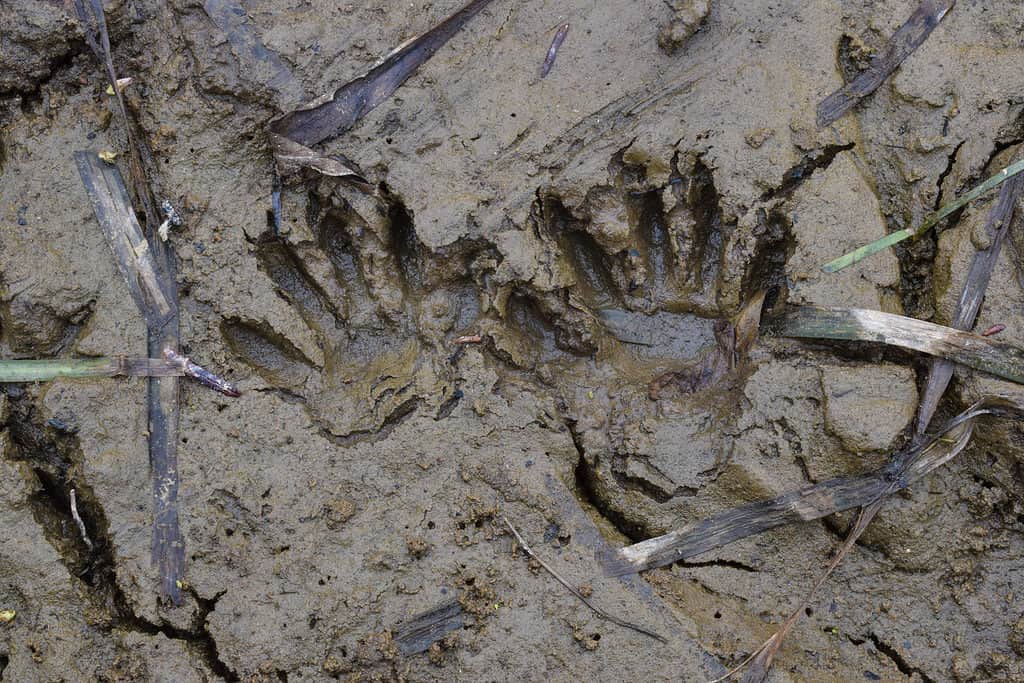
Raccoon tracks are often most visible in the mud.
©K Steve Cope/Shutterstock.com
Raccoon prints will likely be most abundant and clearly visible in muddy terrain. At first glance, they will look like a human toddler’s handprints. Their five slender fingers and palms will be present and depending on the conditions, their claws may appear as well. On soft ground, the raccoon’s digits may spread slightly under their weight, which would make the prints look wider. The main distinguishing factors that will separate raccoon tracks in the mud from coexisting species are the shape and length of their fingers. The distinctive side-by-side pattern will help differentiate raccoon tracks from other species, as well.
Other
On hard ground, raccoon tracks may be more difficult to detect. Their prints will appear smaller or may only include the points on the paw that apply the most pressure to the ground while walking. This can can skew the apparent shape of the fingers. In loose sand, raccoon tracks may be indiscernible or easily corrupted by environmental conditions.
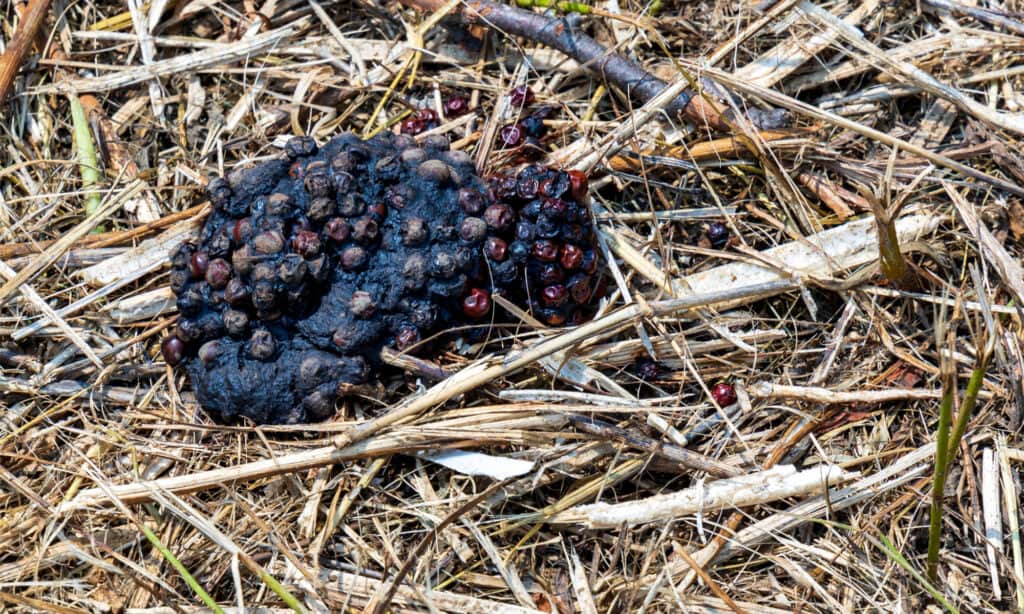
Raccoon scat can be useful when identifying unknown tracks.
©iStock.com/Chimperil59
When trying to identify raccoon tracks in difficult settings, another useful clue you can employ is scat recognition. Identifying animal scat can allow you to deduce what creatures have been in the area. You can also use scat to approximate how recently that animal was there. Raccoon scat is usually tubular, 2 to 3 inches long, and black in color. Undigested berries, seeds, or other foods often appear in the excrement.
The photo featured at the top of this post is © iStock.com/amadeusamse
Thank you for reading! Have some feedback for us? Contact the AZ Animals editorial team.



